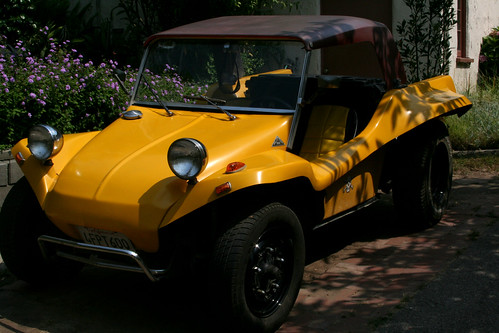
For me, the most difficult part of building the dune buggy was the wiring. Before I even started, I had to decide how much wiring I wanted to have in the car. This meant I had to decide what I wanted to include in the project in the way of accessories, gauges, sound equipment, lighting and whatever else might need electrical power. I also had to decide which wiring route I wanted to take. I could buy a complete VW sedan wiring harness for a little over $200, or I could buy a dune buggy wiring harness for about $65, or I could buy bulk wire from the hardware or auto parts store and design my own harness.
The first thing I did was to find an understandable wiring diagram of all the basic systems normally found in a Volkswagen. I found a vintage hardback Chilton's tune-up manual in a used book store that had a decent diagram which showed the basic circuits I would need to get the car running. I scanned the diagram into my computer, printed it out on two sheets of paper, taped them together, got out some colored highlighters and started outlining circuits. I decided that, since it was to be an open car, I would include only the essential electrical accessories, so as to keep weather damage and theft to a minimum. For a safe, running car I would need wiring for headlights, turn signals, tail lights, running lights, brake lights, instrument lights, engine warning lights and windshield wipers. To go with the lights, I would need a headlight switch, a dimmer switch, a turn signal switch, a brake light switch, a wiper motor switch, a gas gauge and sending unit, and an oil pressure switch. I would also need wiring for the engine electrical system. It looked to me like the dune buggy harness would just about cover all of those circuits, so I ordered the necessary harness and switches.
With the diagram and the parts list done, it seemed like the actually wiring would be fairly simple and straightforward. It really should have been, but it wasn't. When you are dealing with parts and wires that have never been put together in this particular fashion ever before, there are always going to be problems to solve. There were.





